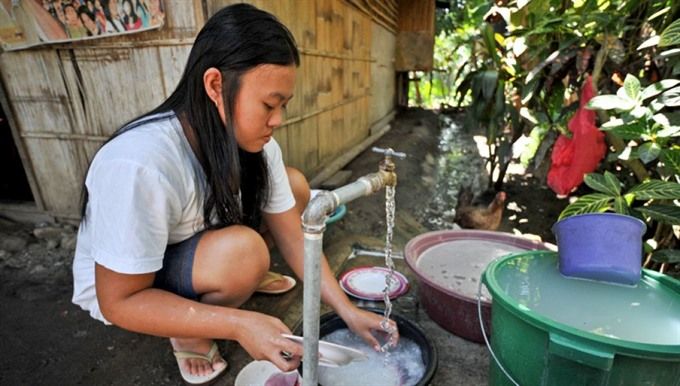ADB to Lend $4.2B to Water Security Project
Published on by Water Network Research, Official research team of The Water Network in Government
The Asian Development Bank (ADB) this year plans to provide loans worth US$4.2 billion, doubling last year’s figure, to support developing countries in the Asia-Pacific region in addressing water challenges.
The information was released by Deputy Director General of the ADB’s Sustainable Development and Climate Change Department Amy S.P. Leung.

The water shortage will get worse by 2050 and 3.4 billion people in the Asia-Pacific developing countries would be living in water-stress areas. ADB looks forward to providing more support to help the countries address these water-related challenges. — Photo Courtesy of ADB
Speaking at the media briefing on water and urban initiatives, Leung said that the Asia-Pacific region is facing a critical situation with water security.
“Currently, most of the region is facing problems of ageing infrastructure, weak institutions, poor governance, sub-optimal water management which results in low productivity and very inefficient use of water resources in almost sectors including agriculture, industries and domestic uses,” Leung said.
Water demand is estimated to go up by 55 per cent by 2050. The water shortage will get worse by 2050 and 3.4 billion people in the region would be living in water-stress areas, she highlighted.
The World Economic Forum’s Global Risk Report last year assessed the emerging water crisis as one of the three most impactful risks that we will be facing in the next decades, Leung added.
Population growth and economic development will continue to be the driver of water demand. As a result, many countries in the region will end up with lower water per capita in the coming year.
The Asian Water Development Outlook 2016 ranks countries in terms of water security, and based on the assessment, 29 out of 48 countries in the Asia Pacific are water insecure.
To help address the challenges, ADB has focussed on four areas: increasing water use efficiency, water and climate, integrated water resource management, and expanded sanitation and wastewater management.
ADB will also continue promoting more innovative and transformative technology projects, for example, using remote-sensing technology for water accounting and productivity in irrigation system, and sludge dewatering and treatment technology so that treated wastewater can be reused.
Of the sum of $4.2 billion, 1.5 billion or 38 per cent of the loans will be provided to irrigation and drainage while $1.4 billion or 35 per cent will be granted to water supply, sanitation and waste management projects. The rest will be used to finance flood management, water resources management and watershed protection, as well as hydropower generation projects.
Leung noted that climate finance within water projects is still very low as developing countries still identified what they need to do to adapt water projects to climate, saying that "This is an area that we are expecting that we will provide more support."
Last year, a small proportion of ADB’s $2.4 billion loans was used in climate change resilience projects.
Read more: Vietnam News
Media
Taxonomy
- Policy
- Water Access
- Integrated Water Management
- Climate Change
- Water Supply
- Water Management
- Infrastructure
- Integrated Infrastructure
- Water & Wastewater